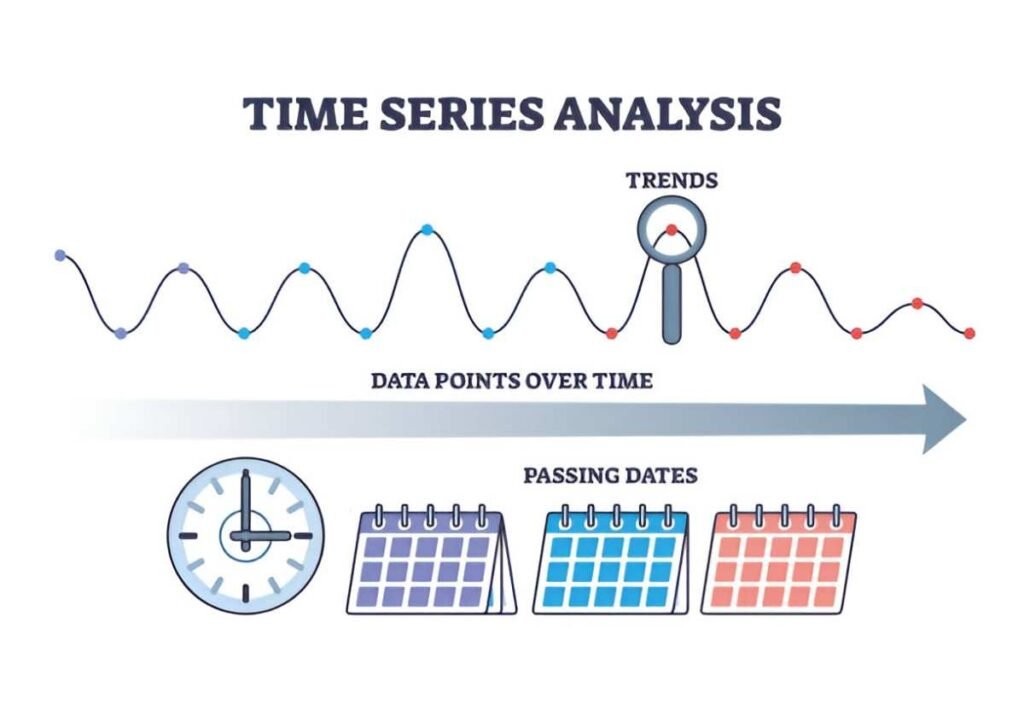Random variations are everywhere. From the stock market to weather patterns, from manufacturing processes to daily traffic, unpredictability is a constant in our lives. As someone who has spent years studying finance and accounting, I’ve come to appreciate the importance of understanding random variations. They shape decisions, influence outcomes, and often determine success or failure. In this guide, I’ll walk you through the basics of random variations, why they matter, and how to make sense of them in practical terms.
Table of Contents
What Are Random Variations?
Random variations, also known as random fluctuations or noise, refer to unpredictable changes in data or processes. These changes are not caused by any specific factor but occur naturally due to the inherent variability in systems. For example, if I measure the daily temperature in New York City over a year, I’ll notice that it doesn’t follow a perfect pattern. Some days are warmer, some are colder, and these fluctuations are random.
In mathematical terms, random variations can be modeled using probability distributions. One of the most common distributions is the normal distribution, often called the bell curve. The normal distribution is defined by its mean (\mu) and standard deviation (\sigma). The mean represents the average value, while the standard deviation measures the spread of the data. The probability density function of a normal distribution is given by:
f(x) = \frac{1}{\sigma \sqrt{2\pi}} e^{-\frac{(x-\mu)^2}{2\sigma^2}}This equation might look intimidating, but it’s simply a way to describe how data points are distributed around the mean.
Why Random Variations Matter
Random variations are crucial because they help us distinguish between signal and noise. In finance, for instance, stock prices fluctuate daily due to random market movements. If I’m analyzing a stock’s performance, I need to determine whether a price change is due to a significant event (signal) or just random noise. Ignoring random variations can lead to poor investment decisions.
In manufacturing, random variations can affect product quality. If I’m running a factory, I need to ensure that my production process is consistent. Random variations can cause defects, and understanding them helps me implement quality control measures.
Types of Random Variations
Random variations can be classified into two main types:
- Common Cause Variations: These are inherent to the process and occur naturally. For example, minor fluctuations in the diameter of a bolt produced in a factory are common cause variations. They are predictable within a range and are part of the system’s normal operation.
- Special Cause Variations: These are caused by specific, identifiable factors. For instance, if a machine in the factory breaks down, it might produce bolts with significantly larger variations in diameter. These are not part of the normal process and need to be addressed.
Understanding the difference between these two types is essential. Common cause variations are expected and manageable, while special cause variations require investigation and corrective action.
Measuring Random Variations
To measure random variations, I use statistical tools like standard deviation, variance, and range. Let’s break these down:
- Standard Deviation (\sigma): This measures the average distance of data points from the mean. A low standard deviation indicates that the data points are close to the mean, while a high standard deviation indicates greater variability.
- Variance (\sigma^2): This is the square of the standard deviation. It gives more weight to larger deviations and is useful in advanced statistical analyses.
- Range: This is the difference between the maximum and minimum values in a dataset. While it’s easy to calculate, it doesn’t provide as much insight as standard deviation or variance.
For example, let’s say I have the following dataset representing daily sales (in dollars) for a small business: [100, 105, 98, 102, 110].
- Calculate the mean:
Calculate the variance:
\sigma^2 = \frac{(100-103)^2 + (105-103)^2 + (98-103)^2 + (102-103)^2 + (110-103)^2}{5} = \frac{9 + 4 + 25 + 1 + 49}{5} = 17.6Calculate the standard deviation:
\sigma = \sqrt{17.6} \approx 4.2This tells me that the daily sales vary by about $4.20 from the average.
Random Variations in Finance
In finance, random variations are a fundamental concept. Stock prices, interest rates, and exchange rates all exhibit random fluctuations. These variations are often modeled using stochastic processes, which incorporate randomness into their predictions.
One of the most famous models is the Geometric Brownian Motion (GBM), used to predict stock prices. The GBM equation is:
dS_t = \mu S_t dt + \sigma S_t dW_tHere, S_t is the stock price at time t, \mu is the expected return, \sigma is the volatility (standard deviation of returns), and dW_t represents random noise.
Let’s say I’m analyzing a stock with an expected annual return of 8% (\mu = 0.08) and a volatility of 15% (\sigma = 0.15). Using the GBM model, I can simulate potential future stock prices, incorporating random variations.
Random Variations in Quality Control
In manufacturing, random variations can impact product quality. To manage this, I use control charts, which plot process data over time and identify when variations exceed acceptable limits.
For example, if I’m producing light bulbs, I might measure the lifespan of each bulb. A control chart would help me determine whether the variations in lifespan are due to common causes (normal) or special causes (needing investigation).
The control limits are calculated as:
- Upper Control Limit (UCL): \mu + 3\sigma
- Lower Control Limit (LCL): \mu - 3\sigma
If data points fall outside these limits, it indicates special cause variations.
Random Variations in Everyday Life
Random variations aren’t just confined to finance or manufacturing. They’re part of our daily lives. For instance, consider the time it takes to commute to work. Some days, traffic is light, and I arrive early. Other days, accidents or roadwork cause delays. These variations are random and unpredictable.
Understanding this helps me plan better. If I know that my commute time has a standard deviation of 10 minutes, I can leave earlier to account for potential delays.
The Role of Probability
Probability plays a key role in understanding random variations. It allows me to quantify uncertainty and make informed decisions. For example, if I’m launching a new product, I can use probability to estimate demand.
Let’s say historical data shows that demand for similar products follows a normal distribution with a mean of 1,000 units and a standard deviation of 200 units. I can calculate the probability of demand exceeding 1,200 units using the Z-score formula:
Z = \frac{X - \mu}{\sigma}Here, X = 1200, \mu = 1000, and \sigma = 200.
Z = \frac{1200 - 1000}{200} = 1Using a Z-table, I find that the probability of Z > 1 is about 16%. This means there’s a 16% chance that demand will exceed 1,200 units.
Managing Random Variations
While random variations are inevitable, I can manage their impact. Here are some strategies:
- Increase Sample Size: Larger samples reduce the effect of random variations. For example, if I’m conducting a survey, a larger sample size will provide more accurate results.
- Use Statistical Tools: Tools like control charts, regression analysis, and hypothesis testing help me identify and manage random variations.
- Implement Robust Processes: In manufacturing, robust processes are less sensitive to random variations. For example, using high-quality materials can reduce defects.
- Diversify Investments: In finance, diversification reduces the impact of random market fluctuations. By spreading investments across different assets, I can minimize risk.
Common Misconceptions
There are several misconceptions about random variations. One is that they can be eliminated. In reality, random variations are inherent in any process. The goal is not to eliminate them but to understand and manage them.
Another misconception is that random variations are always bad. While they can cause problems, they also create opportunities. For example, random variations in stock prices allow investors to buy low and sell high.
Conclusion
Random variations are a fundamental aspect of the world around us. Whether I’m analyzing financial data, managing a manufacturing process, or planning my daily commute, understanding random variations helps me make better decisions. By using statistical tools and probability, I can quantify uncertainty and manage its impact.





